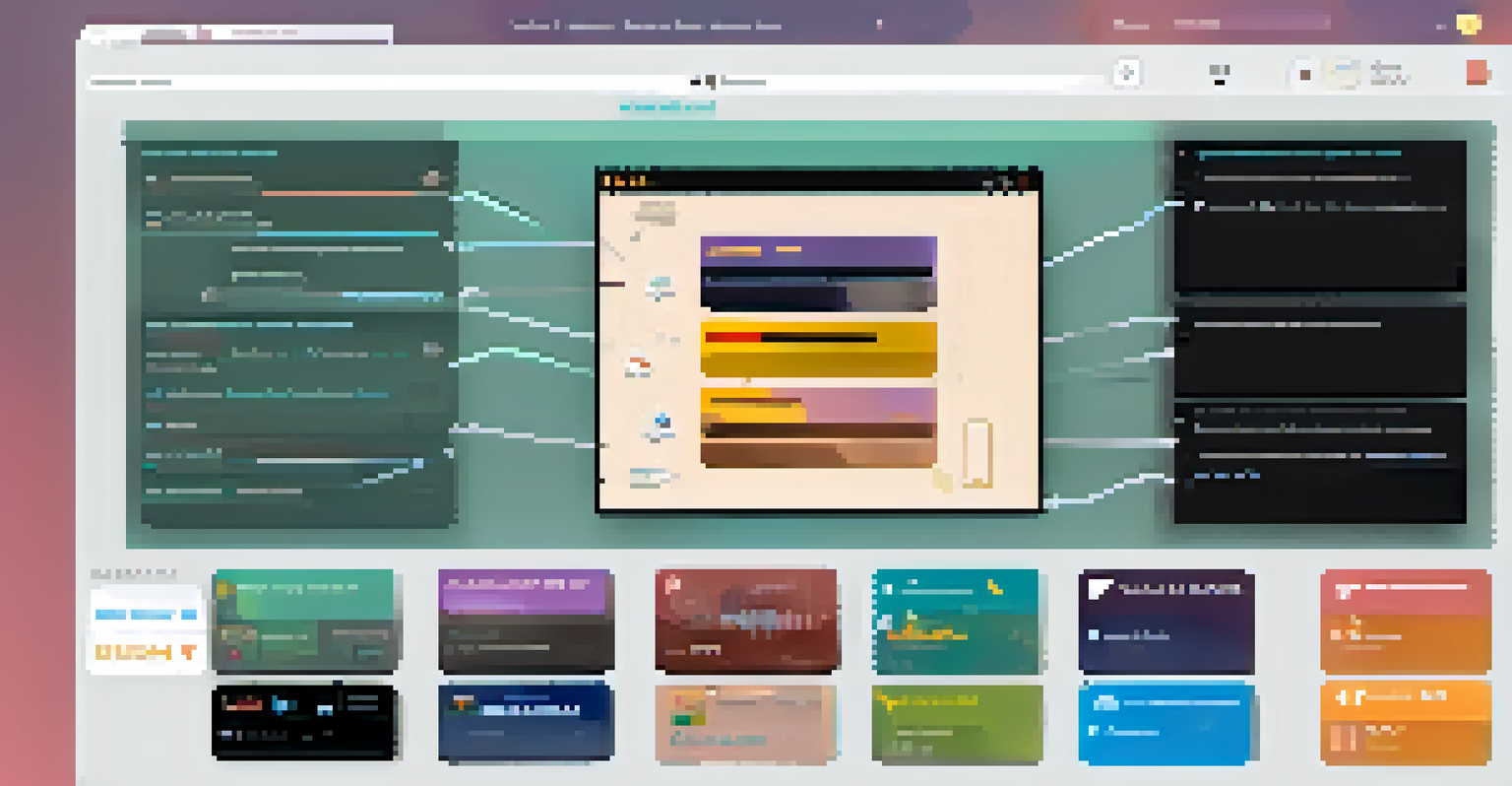Understanding User-Centric Design Principles for NFT Platforms

What is User-Centric Design in the NFT Space?
User-centric design focuses on creating products that prioritize the needs and preferences of users. In the context of NFT platforms, this means understanding the diverse audience that interacts with digital assets. By prioritizing user experience (UX), designers can ensure that the platform meets user expectations and enhances engagement.
Design is not just what it looks like and feels like. Design is how it works.
For instance, if a platform is challenging to navigate, users may quickly lose interest, leading to a decrease in sales and community participation. A user-centric approach involves gathering feedback from actual users, allowing designers to make informed decisions. This process ensures that the platform evolves alongside the community's needs and preferences.
Ultimately, user-centric design is about building trust and loyalty within the NFT community. When users feel their needs are being met, they are more likely to return and recommend the platform to others, which in turn fosters a thriving digital marketplace.
The Importance of Intuitive Navigation for Users
Intuitive navigation is crucial for any online platform, especially NFT marketplaces where users need to explore a variety of digital assets. Users should be able to find what they’re looking for with minimal effort, as a confusing layout can lead to frustration. Simple categories, search functions, and filters can significantly enhance the user experience.

Imagine walking into a gallery where the artwork is simply scattered everywhere; it would be overwhelming! Conversely, a well-organized gallery allows visitors to appreciate each piece fully. Similarly, an NFT platform that utilizes clear navigation helps users discover new collections and artists more effortlessly.
User-Centric Design Enhances Trust
Prioritizing user needs and feedback fosters trust and loyalty within NFT communities.
By investing in intuitive navigation, NFT platforms can lower barriers for new users and encourage more casual browsers to dive deeper into the offerings. This not only enhances user satisfaction but can also lead to increased sales and community interaction.
Creating Engaging Visuals for NFT Platforms
Visual appeal is a key component of user-centric design, particularly in the vibrant world of NFTs. High-quality images and well-thought-out layouts can draw users in and keep them engaged. When showcasing digital art, the design of the platform must complement the artwork, allowing users to appreciate it fully.
The best way to predict the future is to design it.
Think of a well-designed art exhibition that highlights each piece's unique features versus a cluttered room filled with random decorations. The former captivates visitors, while the latter may leave them disoriented. Similarly, effective visuals on NFT platforms can enhance the overall user experience, making it more enjoyable and memorable.
Additionally, incorporating animations or interactive elements can provide a dynamic experience for users. This not only captures their attention but also encourages exploration and interaction, fostering a deeper connection with the platform and its offerings.
Integrating User Feedback for Continuous Improvement
Feedback is the lifeblood of user-centric design. By actively seeking input from users, NFT platforms can better understand their needs and preferences, leading to continuous improvement. This could involve simple surveys, user testing sessions, or monitoring user behavior through analytics.
For example, if users frequently struggle with a specific feature, their feedback can guide developers to make necessary adjustments. This iterative approach not only enhances the platform but also shows users that their voices are valued, fostering a sense of community.
Intuitive Navigation Boosts Engagement
Clear and simple navigation allows users to explore NFT platforms effortlessly, enhancing their overall experience.
Moreover, regular updates based on user feedback can keep the platform fresh and relevant. This responsiveness can help retain existing users and attract new ones, ultimately establishing a loyal user base.
Ensuring Accessibility for All Users
Accessibility is a crucial aspect of user-centric design, and it should never be overlooked. Ensuring that NFT platforms are accessible to users with diverse abilities makes the digital space more inclusive. This can involve optimizing content for screen readers, using contrasting colors, and providing alternative text for images.
Imagine a visually stunning platform that is completely inaccessible to users with visual impairments; it would alienate a significant portion of potential customers. By prioritizing accessibility, NFT platforms can create a welcoming environment for everyone, regardless of their abilities.
Moreover, accessible design can enhance the user experience for all users, not just those with disabilities. Simple changes can lead to smoother navigation and clearer content, ultimately benefiting the entire community and increasing overall engagement.
Building Trust Through Transparent Communication
Transparency is vital in establishing trust with users, especially in the NFT space, which can sometimes be fraught with skepticism. Clear communication regarding fees, processes, and policies can help users feel more secure when engaging with a platform. This includes providing straightforward information about how transactions work and what users can expect.
Think about how a clear, concise explanation at a restaurant makes ordering feel more comfortable. Similarly, when NFT platforms communicate openly, users are likely to feel more at ease navigating the digital marketplace. This trust can translate into higher user retention and a more vibrant community.
Visual Appeal Captivates Users
High-quality visuals and engaging layouts draw users in and create memorable interactions with digital assets.
Additionally, implementing user-friendly FAQs, tutorials, and support channels can further enhance transparency. By ensuring users have access to the information they need, platforms can empower them to make informed decisions, ultimately fostering a positive user experience.
The Role of Community Engagement in Design
Community engagement is at the heart of successful NFT platforms. By actively involving users in the design process, platforms can create features that resonate with their community. This could mean holding discussions, brainstorming sessions, or even co-designing elements with users to capture their unique perspectives.
Picture a neighborhood garden where everyone pitches in to plant flowers; the result is a beautiful, diverse space that reflects the community's tastes. Similarly, when users have a say in the design of an NFT platform, it fosters a sense of ownership and pride over the space.

Moreover, engaging with the community can lead to innovative ideas that designers might not have considered otherwise. This collaboration can create a richer, more vibrant platform that not only meets user needs but also evolves organically with the community’s growth.
Conclusion: Prioritizing Users for NFT Success
In conclusion, implementing user-centric design principles is essential for the success of NFT platforms. By focusing on user needs, intuitive navigation, engaging visuals, and community involvement, platforms can create a thriving digital marketplace. As the NFT space continues to grow, prioritizing user experience will set successful platforms apart from the competition.
Remember, the key to a successful NFT platform lies in understanding and valuing the user experience. By integrating feedback and ensuring accessibility, platforms can cultivate a loyal user base that feels connected and engaged.
User-Centric Design Boosts Engagement
Prioritizing user needs and preferences in NFT platforms enhances user experience and fosters community loyalty.
Ultimately, when users are at the forefront of design decisions, NFT platforms can foster trust, loyalty, and community engagement, paving the way for lasting success in the digital art space.